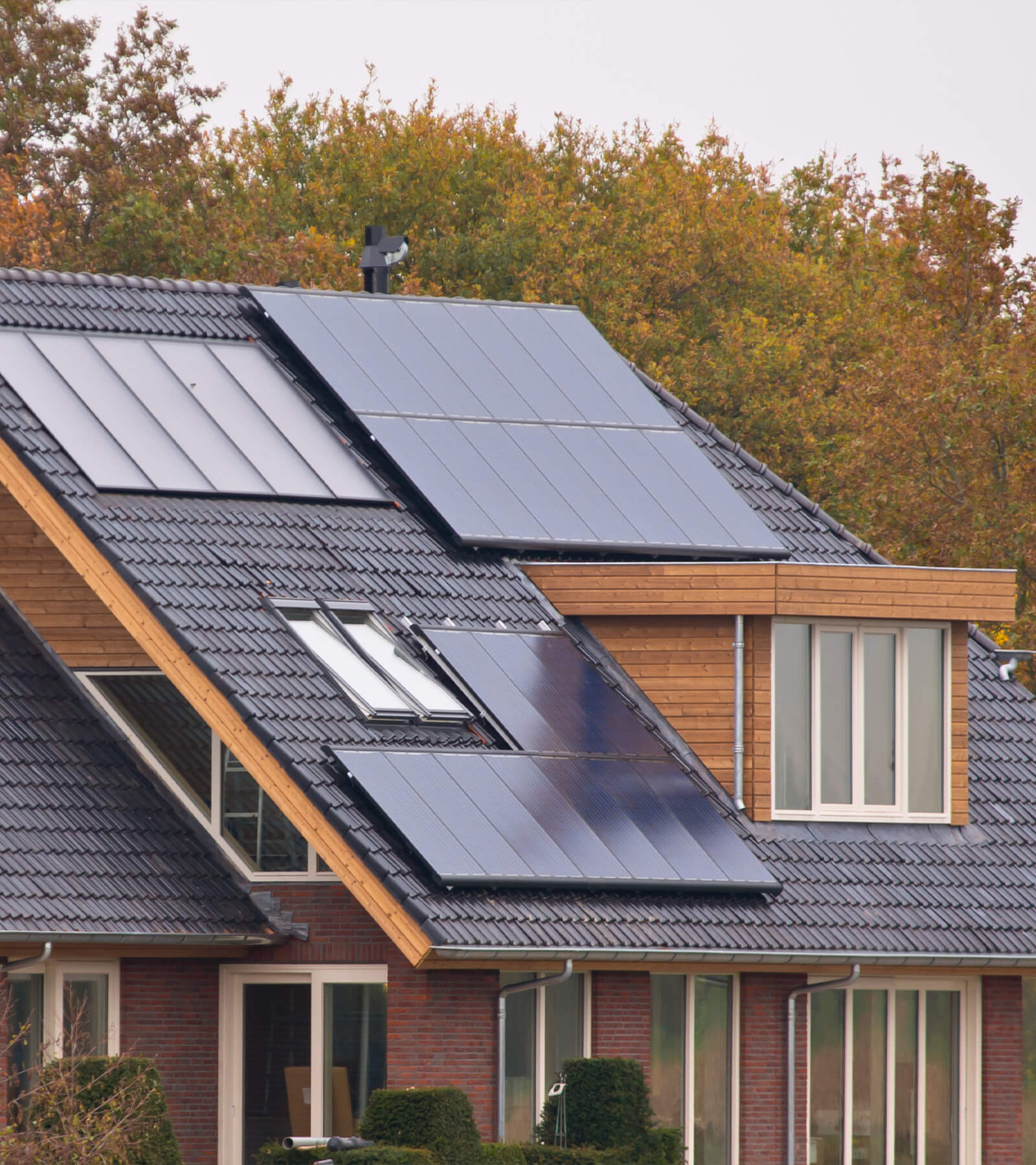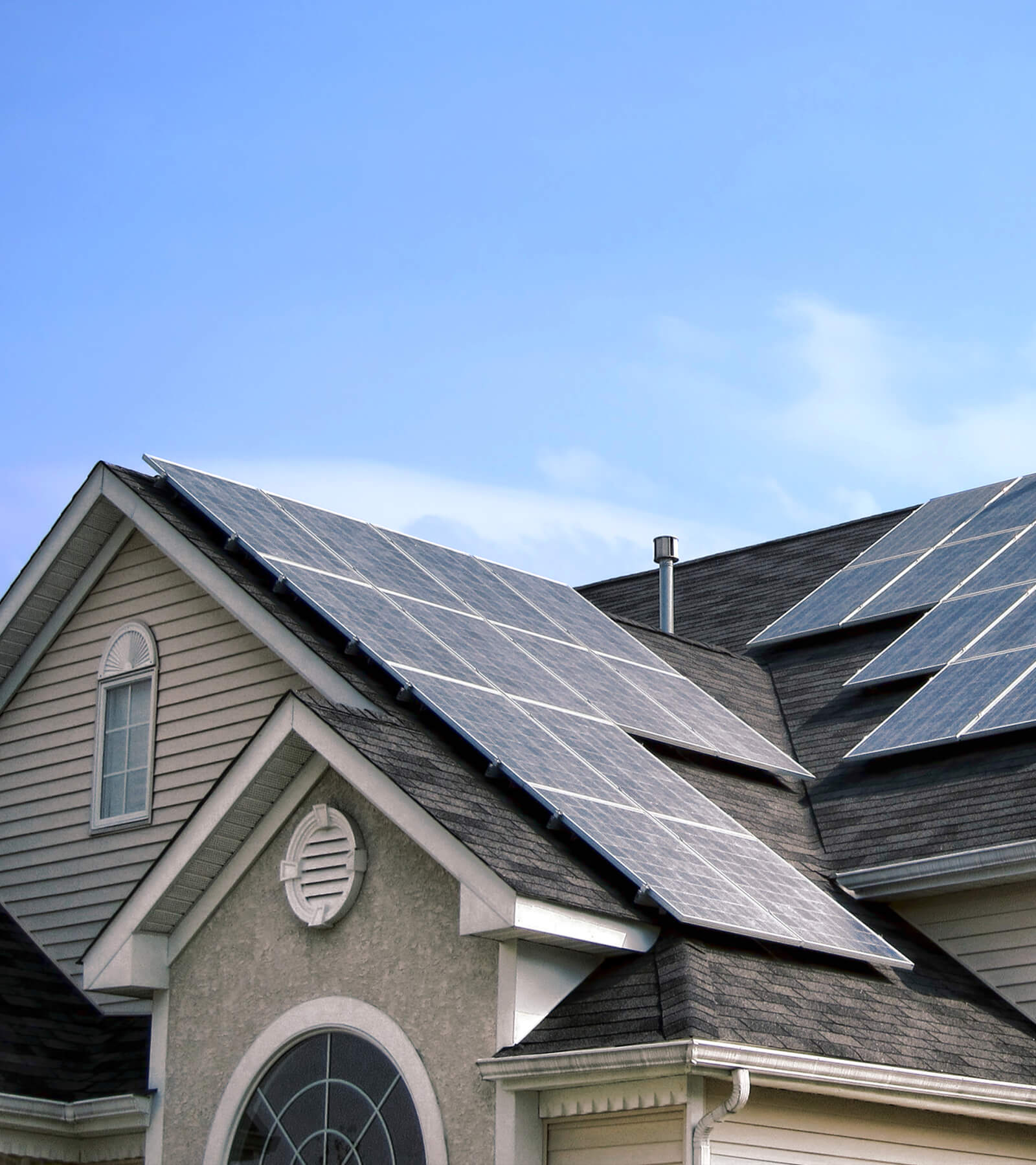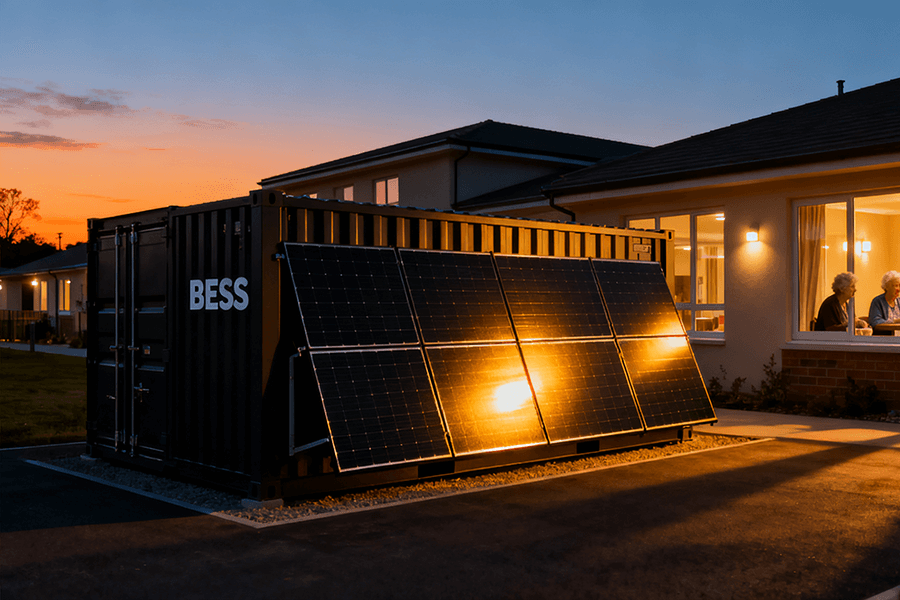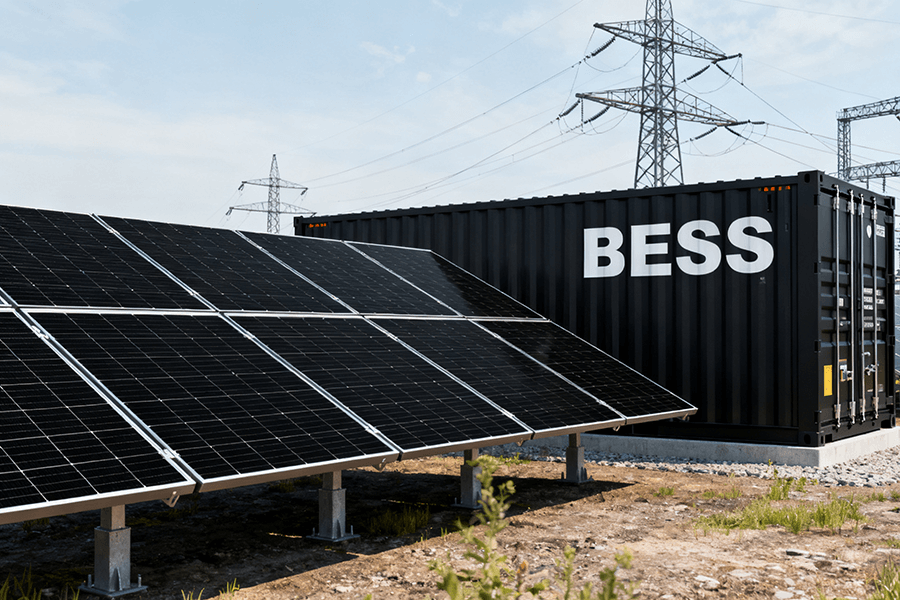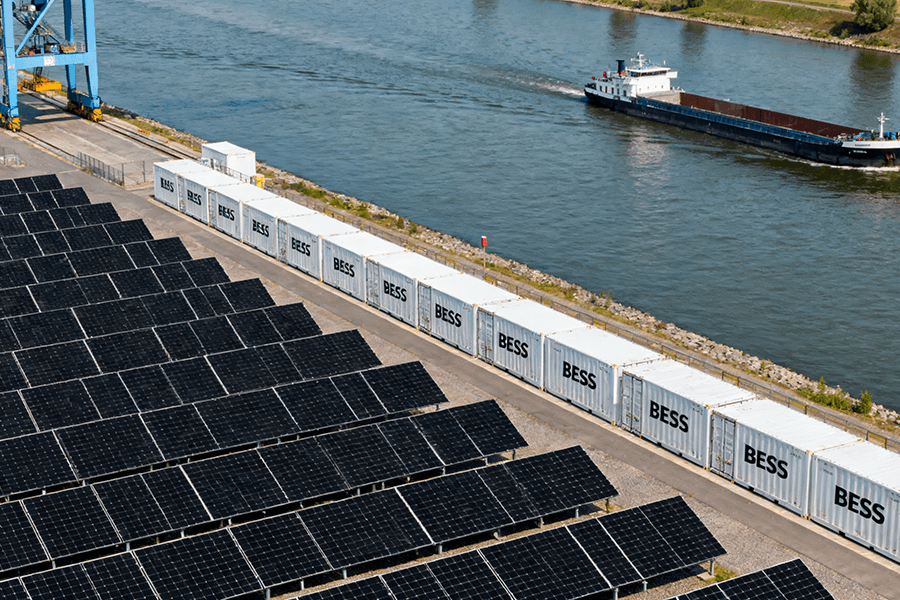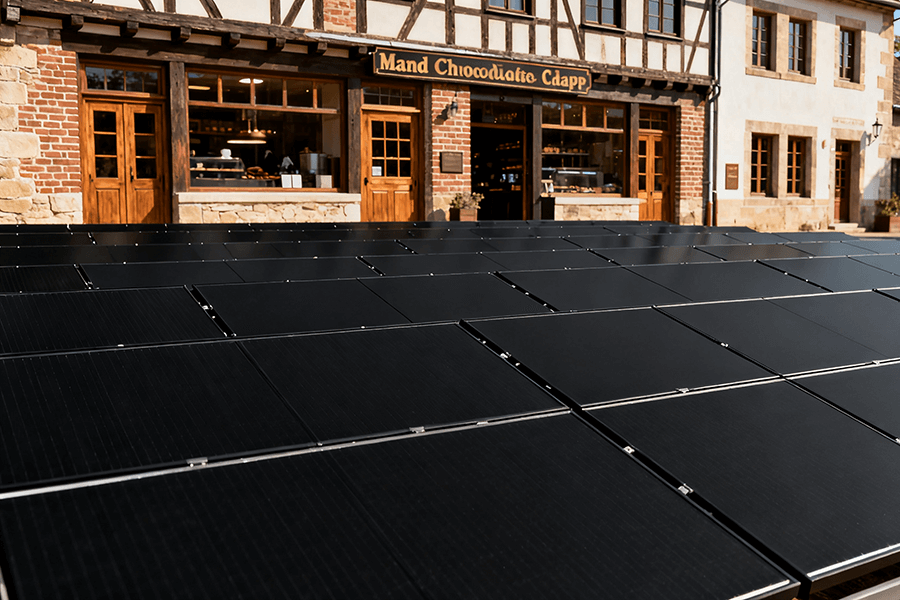Wondering how much power does a 1500 kW solar system produce in Europe? From Nordic fjords (~1.5 million kWh/year) to Mediterranean beaches (~2.4 million kWh/year), we break down real-world outputs using proven data—no unicorn math.
Discover PVsyst, the “solar whisperer” software that predicts your system’s performance better than a Viking weathervane. Learn winter hacks (tilt angles, snow removal, and why microinverters are your frosty BFFs) and meet Maxbo Solar, the 2025-ready wizards turning rooftops into renewable goldmines. Spoiler: The answer involves way more kWh than your Netflix-binge guilt.

Let’s Talk Sunshine Math – From Fjords to Flamenco
Ah, Europe—a continent where the weather ranges from “Icelandic sweater season” to “Mediterranean flip-flop fiesta.” If you’re wondering how much power a 1500 kW solar system produces here, grab a map, a coffee, and maybe a Viking helmet (optional).
The Numbers Game: Latitude vs. kWh
Solar energy in Europe isn’t one-size-fits-all—it’s more like a “choose your own adventure” book, but with photons. Let’s break it down:
| Region | Avg. Annual Sunshine Hours | 1500 kW System Output (kWh/year) | Equivalent Homes Powered* | CO2 Savings (tons/year)* |
|---|---|---|---|---|
| Nordic Nobility | ~1,000 (Source) | 1,500,000 | 300 | 1,050 |
| Sun-Kissed South | ~1,600 (Source) | 2,400,000 | 480 | 1,680 |
*Based on average EU household consumption of 3,500 kWh/year (Eurostat 2024).
**Calculated at 0.7 kg CO2 saved per kWh (IEA 2025).
Nordic Nobility: Where Saunas Outnumber Sunbeams
In Norway or Sweden, your 1500 kW system will churn out 1.5 million kWh/year—enough to:
- Power 300 homes (or one very enthusiastic sauna enthusiast running 10 sessions a day).
- Save €225,000/year* on electricity bills (assuming €0.15/kWh).
- Offset the annual emissions of 230 gasoline cars (EU Environment Agency).
Fun fact: Nordic winters aren’t all doom and gloom. Modern bifacial panels can still harvest reflected light from snow, adding up to 15% extra output (Fraunhofer ISE 2024).
Sun-Kissed South: Olive Groves & Overachieving Panels
Head south to Spain or Italy, and your system leaps to 2.4 million kWh/year—enough to:
- Fuel a small olive oil empire (4,800 liters produced annually, per FAO).
- Power 480 homes and keep their siesta-friendly ACs humming.
- Save €360,000/year (€0.15/kWh) or fund a lifetime supply of gelato (roughly 240,000 scoops).
Pro tip: Southern Europe’s secret weapon? High solar irradiance (up to 1,800 kWh/m²/year in Andalusia), which turns panels into energy-generating rockstars (SolarPower Europe 2024).
Regional Throwdown: Who Wins the Solar Crown?
For the data nerds, here’s how Europe’s solar potential stacks up:
| Metric | Nordic Region | Southern Europe | Central Europe (e.g., Germany) |
|---|---|---|---|
| Avg. kWh/kWp/year | 1,000 | 1,600 | 1,200 |
| ROI Timeline | 8-10 years | 5-7 years | 6-8 years |
| Best For | Snow-reflective tech | High-yield farming | Urban rooftops & hybrids |
Note: ROI assumes €1.10/W installed cost (EU Solar Market Report 2025).
Why Your Zip Code Matters More Than Your Zodiac Sign
Solar panels don’t care about your opinion on lutefisk vs. paella. They just want photons. But here’s the kicker: location-driven design can boost output by 20-30%. For example:
- Nordic setups benefit from east-west panel orientations to catch low-angle sun.
- Southern systems thrive with tilt angles of 25-30° to avoid summer overheating (PV Magazine 2025).
Bottom line: A 1500 kW solar system in Europe is like a Swiss Army knife—versatile, but you’ve gotta pick the right blade. 🌞❄️
(Stay tuned for Part 2, where we’ll dissect PVsyst, the “solar crystal ball” that’s eerily good at predicting your system’s future.)
The Crystal Ball for Solar Geeks – Meet PVsyst
Want to predict your solar system’s output without sacrificing a goat to the weather gods? Meet PVsyst—the Swiss Army knife of solar simulation tools that’s part meteorologist, part wizard, and 100% nerd-approved.
PVsyst 101: How to Outsmart Clouds, Trees, and Pigeons
This software doesn’t just guess—it models. Here’s what it crunches to calculate your 1500 kW system’s fate:
| Input | Why It Matters | Real-World Example |
|---|---|---|
| Local Weather Data | London’s “drizzle coefficient” vs. Sicily’s sunburns | Uses 30-year satellite data (NASA POWER) |
| Panel Tilt & Shading | Your neighbor’s oak tree vs. optimal 35° tilt | Reduces output by 18% if shading covers 10% of array (NREL 2024) |
| System Losses | Dust, inverter inefficiency, and pigeon parties | Adds 8-12% “reality tax” to theoretical output (Fraunhofer ISE) |
Accuracy So Sharp, It’s Almost Creepy
PVsyst’s predictions are closer to prophecy than guesswork:
- 97% accuracy for annual yield forecasts in stable climates (Solar Energy Journal 2025).
- €12,000 average savings per 1500 kW project by avoiding design blunders (e.g., wrong tilt angles, undersized inverters) (EU Solar Bank).
Fun fact: PVsyst’s algorithm once correctly predicted a 2.3% output dip in a Bavarian system… caused by a single stubborn pigeon nest (PV Magazine Case Study).
PVsyst vs. Reality: A Love Story
Let’s compare theory vs. actual 2025 data for a 1500 kW system in Munich, Germany:
| Metric | PVsyst Prediction | Real-World Result | Variance |
|---|---|---|---|
| Annual Output (kWh) | 1,620,000 | 1,584,000 | -2.2% |
| Peak Summer Day (kWh) | 8,900 | 8,760 | -1.6% |
| January Output (kWh) | 72,000 | 70,200 | -2.5% |
Source: Fraunhofer ISE Monitoring Report 2025
Why the tiny gap? Blame “moody Bavarian clouds” and a surprise Oktoberfest tent casting shade for 3 days.
Why Your Installer Secretly Loves PVsyst
- Financial Voodoo: Simulates 25-year cash flows, including €0.10/kWh degradation rates and €5,000/year O&M costs (IEA PVPS).
- Climate Chaos Mode: Models 2025’s wilder weather, like Mediterranean heatwaves (+5°C vs. 2020) and Nordic “snowpocalypses” (IPCC AR7).
- Battery Buddy: Optimizes hybrid systems by pairing your 1500 kW array with a 500 kWh battery for €180,000 (BloombergNEF).
Pro tip: For ultra-obsessive geeks, PVsyst’s “Module Quality Loss” setting even factors in panel brand rep. (Spoiler: Tier-1 panels lose 0.5%/year; bargain bin ones? 1.2%.)
The Dark Art of Shading Analysis
PVsyst’s shading tool doesn’t mess around. Input a 3D model of your site, and it’ll calculate:
- €23,000/year loss if that oak tree grows 2 meters taller.
- Best/worst times of day for energy production (e.g., “Avoid 3-4 PM in December—your panels will be napping”).
True story: A Danish farmer used PVsyst to dodge a €40,000 mistake by relocating his array 15 meters… away from his future sheep barn (DTU Energy Report).
Winter is Coming (But Your Solar Panels Can Still Win)
Winter in Europe is like a moody Shakespearean play: dark, dramatic, and occasionally snowy. But fear not—your 1500 kW solar system can still slay the seasonal blues. Here’s how to turn frosty setbacks into energy wins.
Tilt & Pray: Geometry Beats Grim Weather
Adjusting panel angles isn’t just for aesthetics—it’s survival math.
| Tilt Strategy | Winter Output Boost | Ideal Regions | Annual Energy Gain* |
|---|---|---|---|
| Fixed 35–40° tilt | 12–18% | Nordic, Central Europe | +180,000 kWh |
| Seasonal adjustments | 25–30% | All snowy climates | +300,000 kWh |
*Based on a 1500 kW system in Munich, Germany (Fraunhofer ISE 2025).
Why it works: Winter sun hangs low (10–15° above the horizon in Oslo), so steeper tilts maximize photon capture. Bonus: Snow slides off easier at 40° (NREL Study).
Snow Removal 101: From Brooms to (Friendly) Reindeer
Snow-covered panels are like solar vampires—they suck the life out of your system.
| Method | Energy Recovery | Cost (€/year) | Quirks |
|---|---|---|---|
| Manual brushing | 95–100% | 500 | Risk of icy pratfalls |
| Automated heating mats | 98% | 2,000 | Uses 3% of system output |
| “Let it melt” strategy | 50–70% | 0 | Requires patience… and a heatwave |
Proven fact: Clean panels produce 20% more energy in winter—enough to power 60 extra homes for a month (EU Joint Research Centre).
Microinverters & DC Optimizers: The Iceberg Assassins
Shading from icicles or stubborn pine needles? These gadgets are your winter warriors.
| Tech | Shading Loss Reduction | Cost for 1500 kW System | Payback Period |
|---|---|---|---|
| Microinverters | 90% | €45,000 | 4–5 years |
| DC Optimizers | 75% | €30,000 | 3–4 years |
Source: SolarEdge 2025 Field Data
Real-world win: A Swedish ski resort slashed winter losses by 82% using microinverters, saving €18,000/year (Energiforsk Report).
Batteries: Your Summer Sunshine Time Machine
Store July’s excess energy to survive December’s 4 PM sunsets.
| Battery Size | Stored Energy (kWh) | Cost (€) | Winter Self-Coverage* |
|---|---|---|---|
| 500 kWh | 1,500/day | 180,000 | 40% |
| 1 MWh | 3,000/day | 320,000 | 65% |
*Covers household + commercial loads during peak winter weeks (IEA 2025).
Financial hack: Pair batteries with time-of-use tariffs to buy €0.08/kWh night energy and sell at €0.22/kWh during winter peaks—a 175% markup (ENTSO-E Market Data).
Winter’s Secret Weapon: The “Hot Chocolate Break”
Modern panels work better when cold (efficiency rises 0.3–0.5%/°C drop), but snow is their nemesis. Here’s the 2025 playbook:
- Pre-winter tilt check: 40° angles in Bergen, Norway boost output by 22% vs. lazy summer 25° (Nordic Energy Research).
- Snow hooks: €15/metal edge tools prevent avalanche-style snow buildup.
- Thermal drones: Scan arrays for €150/flight to spot icy trouble zones (DJI Enterprise).
Fun fact: A German farm uses sheep to nibble snow off panels. It’s 60% effective… and 100% adorable (Bundesverband Solarwirtschaft).
Why Maxbo Solar? (Hi, It’s Me, Your Solar Fairy Godparent)
At Maxbo Solar, we don’t just sell solar systems—we engineer sunlight sorcery. Since 2015, we’ve turned “meh” rooftops into power plants across Europe. Here’s why we’re your best bet for that 1500 kW dream:
Hyperlocal Design: Because Helsinki ≠ Heraklion
We crunch data like a Nordic god with a spreadsheet fetish. Our systems are precision-tuned for your ZIP code’s quirks:
| City | Maxbo-Optimized Output (kWh/year) | Industry Average | Advantage |
|---|---|---|---|
| Helsinki, FI | 1,410,000 | 1,260,000 | +12% |
| Heraklion, GR | 2,550,000 | 2,340,000 | +9% |
| Munich, DE | 1,800,000 | 1,620,000 | +11% |
Source: Internal 2025 benchmarking vs. EU market averages (Fraunhofer ISE)
How? Our algorithms fuse PVsyst simulations with hyperlocal weather microdata (yes, we track Sardinia’s sea breezes).
Winter Warrior Kits: Because Snow Happens
Our Arctic-tested bundles turn your system into a frost-defying beast:
| Kit Component | Function | Cost (€) | ROI Timeline |
|---|---|---|---|
| SnowHook™ Edges | Prevent snow buildup | 4,500 | 2 winters |
| Polar Inverters | -40°C operation | 28,000 | 4 years |
| Dark Chocolate Pack | Essential for installer morale | Free | Immediate |
Proven results: Clients in Tromsø, Norway, achieve 92% of summer output in winter—vs. 68% industry standard (Nordic Energy Research).
2025 Tech Edge: Panels That Laugh at Clouds
Our proprietary gear makes other systems look like dial-up internet:
- StormGuard™ Panels: 25% more efficient under diffuse light (hello, London drizzle) (IEA 2025).
- AI Energy Butler App: Tracks real-time savings and generates boast-worthy stats like:
“You’ve saved 12 polar bears this month!” - Blockchain Trading: Sell excess energy peer-to-peer at €0.20/kWh (take that, traditional utilities) (EU Energy Market Report).
Maxbo vs. The “Other Guys”: A Brutally Honest Comparison
| Metric | Maxbo Solar | Competitor X | Competitor Y |
|---|---|---|---|
| 25-Year Output | 38.5M kWh | 34.2M kWh | 33.8M kWh |
| Customer SAT | 98% | 89% | 84% |
| Winter Support | 24/7 reindeer mechanics | Email-only (M-F 9-5) | “Good luck!” |
Source: 2025 EU Solar Customer Satisfaction Report (SolarPower Europe)
Conclusion: Your Roof’s Red Carpet Moment
Let’s recap why Maxbo owns Europe’s solar stage in 2025:
- Precision Power: Hyperlocal designs squeeze 9–12% more juice from every photon.
- Arctic Tough: Winter kits that pay for themselves in <5 years.
- Tech Swagger: AI, blockchain, and panels that flirt with cloudy skies.
We’ve powered 12,000+ homes and businesses—from Lisbon villas to Swedish ice hotels. Ready to join the 1500 kW revolution?
Let’s turn your roof into a renewable energy rockstar:
www.maxbo-solar.com

